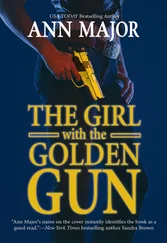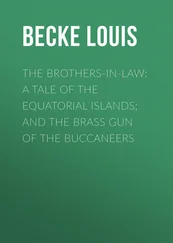The Colt Peacemaker, introduced in 1873, is often called “the gun that won the West,” but it was so prone to accidental discharge that many U.S. Army officers carried the gun loaded with only five cartridges, with the empty sixth chamber under the hammer. On cross-country wagon journeys, firearms accidents sometimes proved a more serious problem than disease. On one journey, a pioneer mistook his mule for an Indian and shot it twice. Of the four men killed in the famous Johnson County War, two died from accidental gunshot wounds. In Bodie, California, Roger McGrath discovered, one man “accidentally shot himself in the jaw while inspecting a revolver that had misfired.” Even the West’s celebrities had their accidents. Clay Allison shot himself in the foot and eventually had to walk with a cane. Wild Bill Hickok accidentally killed one of his deputies. On January 9, 1876, Wyatt Earp’s revolver fell from his holster as he sat in the back room of the Custom House saloon in Wichita. According to the Wichita Beacon of January 12, “the ball passed through his coat, struck the north wall, then glanced off and passed out through the ceiling. It was a narrow escape and the occurrence got up a lively stampede from the room.”
Frontier celebrities also did their best to assist in myth manufacturing. They seemed extraordinarily aware of the great significance later historians would assign to their epoch. When Pat Garret published his rather exaggerated account of his pursuit of Billy the Kid, “his name became almost synonymous with western law enforcement,” according to Frank Prassel. Jesse James’s brother Frank, a member of the James Gang, toured the country with another outlaw, Cole Younger; they billed themselves as the “Cole Younger-Frank James Wild West Show.” Frank later opened the family farm to tourists, charging fifty cents a head. Bill Tilghman, a famous Oklahoma lawman, also toured the country and in 1914 made a film called The Passing of the Oklahoma Outlaws . A former train robber, Al Jennings, eventually wound up acting in silent-film westerns, a career that lasted from 1908 to 1920.
The frontier figure who most influenced how America now thinks about the Old West, and indeed about guns, was William Frederick Cody—Buffalo Bill—a frontier scout turned master of self-promotion who first achieved fame in 1869 when Ned Buntline featured him in one of his dime novels. Cody’s fame was greatly enhanced in 1876 when, while serving as a scout during the Plains Indians wars, he encountered a lone Cheyenne brave. Cody’s horse stumbled, causing Cody to fall. As the brave charged, Cody coolly shot him dead, then scalped him and waved the scalp over his head. By winter, he was reenacting the incident over and over in a stage drama called “The Red Hand; or, The First Scalp for Custer,” in which he played himself.
In 1882, Cody founded “Buffalo Bill’s Wild West,” a traveling show consisting of dramatic scenes supposedly meant to capture real life on the frontier. Real life, however, wouldn’t have sold many tickets; Cody’s version consisted of stagecoach robberies, Indian attacks, buffalo hunts, and stunning feats of marksmanship. Cody was the star of the show. As if to dispel any doubt, one showbill noted: “The central figure in these pictures is that of THE HON. W. F. CODY (Buffalo Bill), to whose sagacity, skill, energy and courage… the settlers of the West owe so much for the reclamation of the prairie from the savage Indian and wild animals, who so long opposed the march of civilization.”
The scenes presented a grossly distorted view of the West, but to reinforce the illusion of authenticity, Cody included such props as real buffalo and a bona fide stagecoach. He even recruited the help of Indians who had fought in the Plains wars and participated in the slaughter of General Custer and his men. Sitting Bull, the Sioux chief, joined the tour in 1885 for a limited engagement.
The show was immensely popular. In 1885, Cody took his “Wild West” to forty U.S. cities. In 1886, the show reached New York. Staged in Madison Square Garden, the set included a reproduction of the town of Deadwood doomed to be destroyed in each performance by a mock cyclone. In a single week, the show drew two hundred thousand people. The following year, Cody took the show to London, accompanied by ninety-seven Cheyenne, Kiowa, Pawnee, and Sioux Indians (including the Sioux chief Red Shirt), one hundred eighty horses, eighteen buffalo, ten elk, ten mules, and a dozen or so other animals. He also brought Phoebe Anne Moses, a twenty-seven-year-old woman from Tiffin, Ohio, who had begun shooting when only eight years old to help feed her family. She performed as Annie Oakley. At one point during the “Wild West” ’s London engagement, Cody’s Deadwood stage careened about the exhibition stadium carrying three crown princes and five kings, including the Prince of Wales. When the Indians attacked the stage, Buffalo Bill himself came riding to its rescue, as always.
Richard Slotkin, author of the 1992 book Gunfighter Nation: The Myth of the Frontier in Twentieth-Century America , contends that from 1885 to 1905, Cody’s “Wild West” “was the most important commercial vehicle for the fabrication and transmission of the Myth of the Frontier. It reached large audiences in every major city and innumerable smaller ones throughout the United States. The period of its European triumph coincided with the period of massive immigration to America. As many immigrants testified, the ‘Wild West’ was the source of some of their most vivid images and expectations of the new land.”
Undoubtedly, the show also persuaded many Americans and immigrants that the gun was central to the building of America. The proliferation of guns on and among the actors would alone have made the point, but Cody’s showbill addressed the matter directly in a discussion titled “The Rifle as an Aid to Civilization.” “The bullet,” the program declared, “is the pioneer of civilization, for it has gone hand in hand with the axe that cleared the forest, and with the family Bible and school book. Deadly as has been its mission in one sense, it has been merciful in another; for without the rifle ball we of America would not be to-day in the possession of a free and united country, and mighty is our strength.”
Buffalo Bill and his contemporaries the dime novelists, pulp writers, and overly enthusiastic reporters also assisted in myth manufacturing in a more indirect, but possibly more significant way. They provided the plots that Hollywood would soon use to relay and reinforce the distortions of myth, among them the notion that when all else fails, a gun can save us. From the earliest days of the film industry, movie directors recognized the lasting appeal of the frontier. In 1903, Edwin S. Porter made The Great Train Robbery , considered the first western and an important precursor of modern narrative cinema. It was an immediate success, imitations quickly followed, and within five years the western became an established genre. The real frontier, however, was left further and further behind.
By 1925, William Hart had vividly established the good badman as a film archetype. Next came Tom Mix, who perhaps did the true West the gravest injustice by inventing the fancy cowboy with his tailored clothes, silver-inlaid boots, diamond-studded spurs, and pearl-handled Colt six-guns. No one ever walked into Tombstone, Arizona, in the late nineteenth century wearing such clothes, yet after Mix’s death in a car crash in 1940 a plaque was installed at the crash site that read: “In Memory of Tom Mix, Whose Spirit Left His Body on This Spot and Whose Characterizations and Portrayals in Life Served Better to Fix Memories of the Old West in the Minds of Living Man.”
The popularity of westerns rose steeply through the 1920s, then alternately rose and fell until the end of World War II when Hollywood revived the genre once again, this time with a vengeance. Fourteen feature-length westerns appeared in 1947; more than twice that number appeared in 1948. Forty-six westerns debuted in 1956 alone. All to some extent reinforced the notion that guns tamed the frontier. Some westerns did so by casting guns as central protagonists, as in Colt .45, Springfield Rifle, Winchester ’73 , and of course, The Gun That Won the West .
Читать дальше
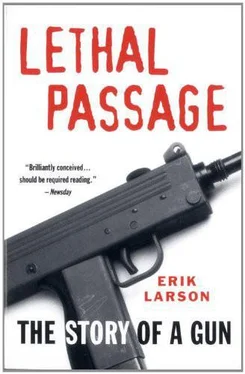
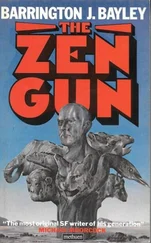
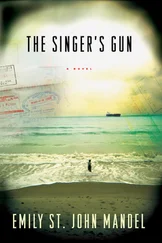
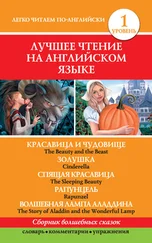
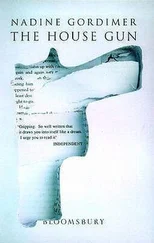

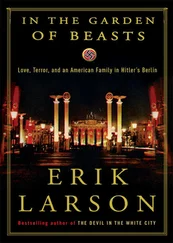

![Ричард Деминг - Whistle Past the Graveyard [= Give the Girl a Gun]](/books/412176/richard-deming-whistle-past-the-graveyard-give-t-thumb.webp)
